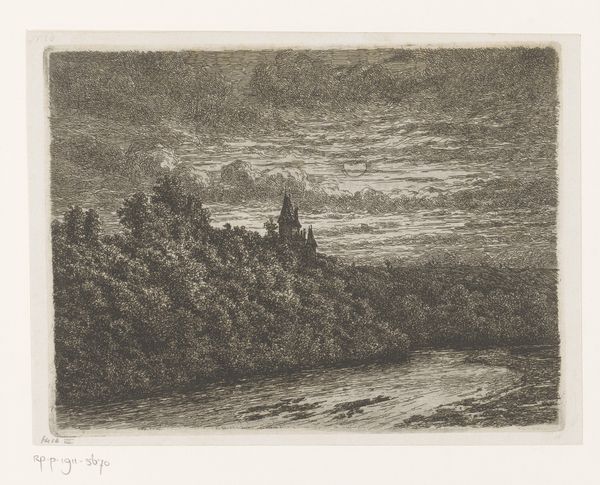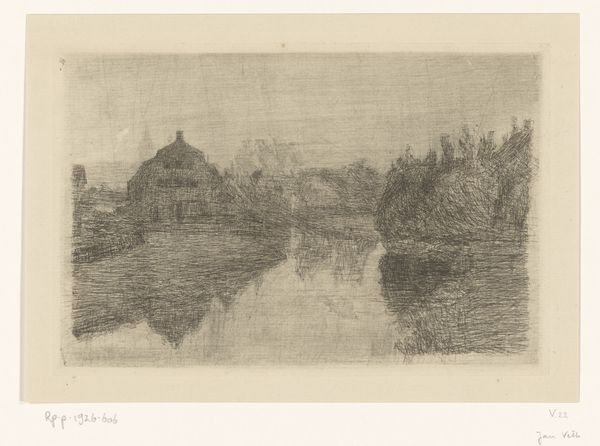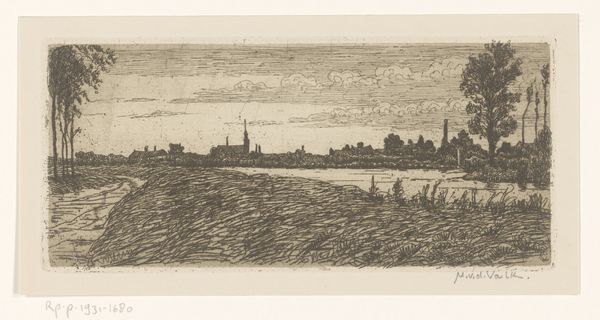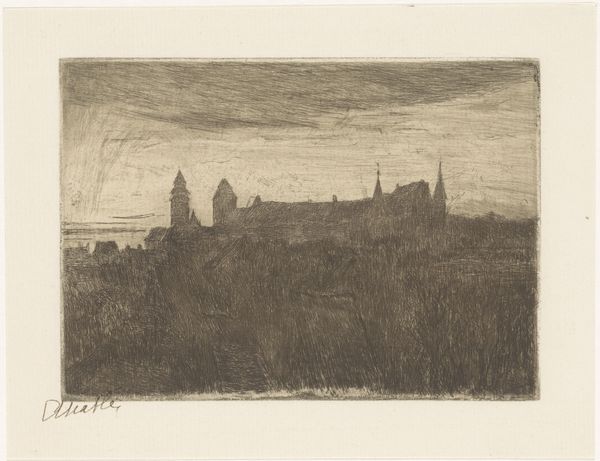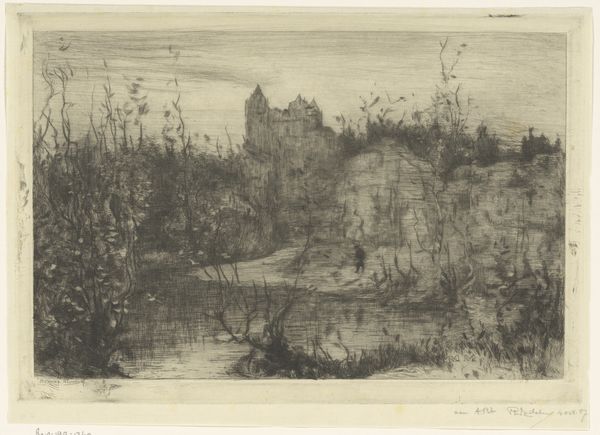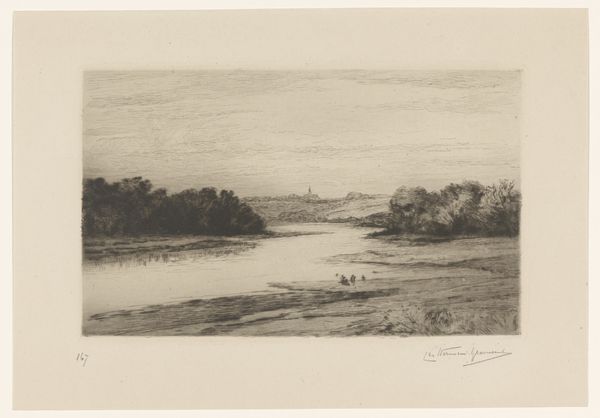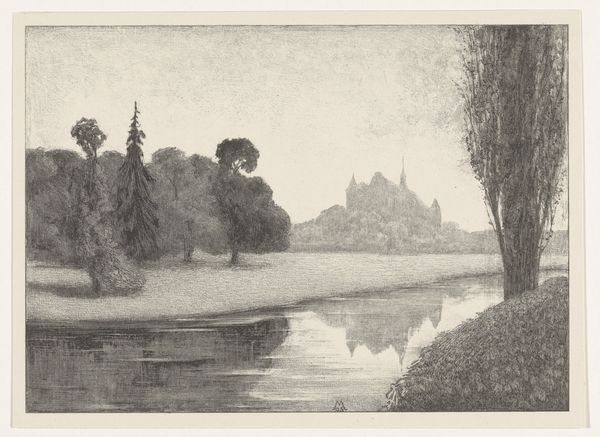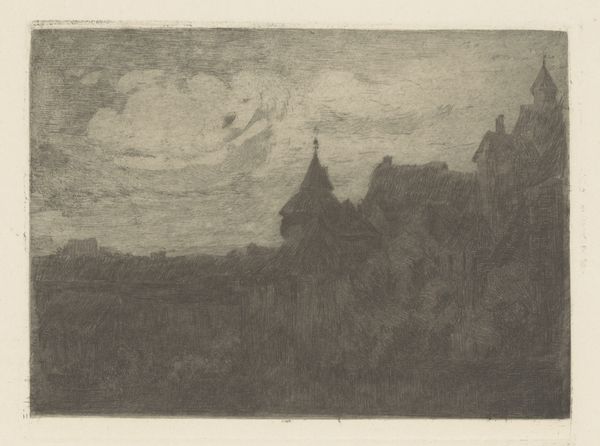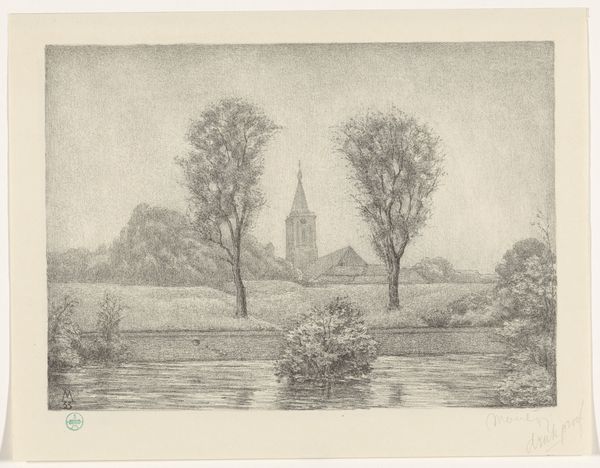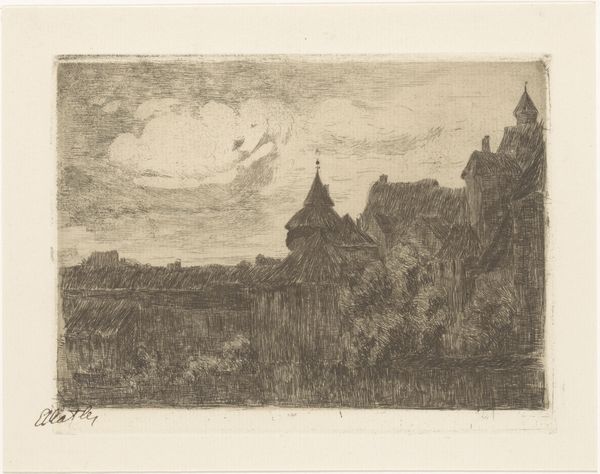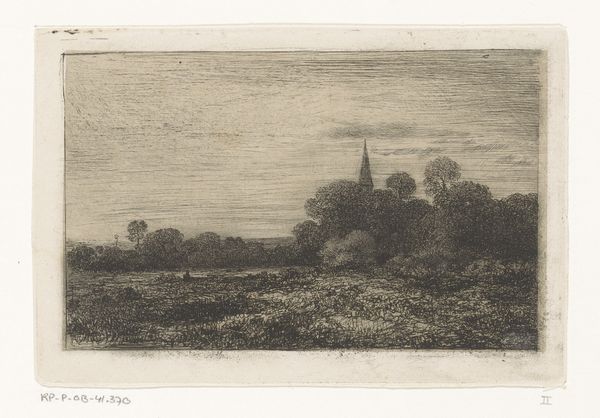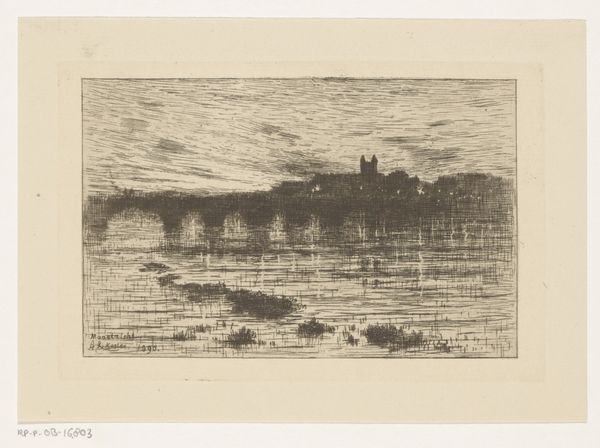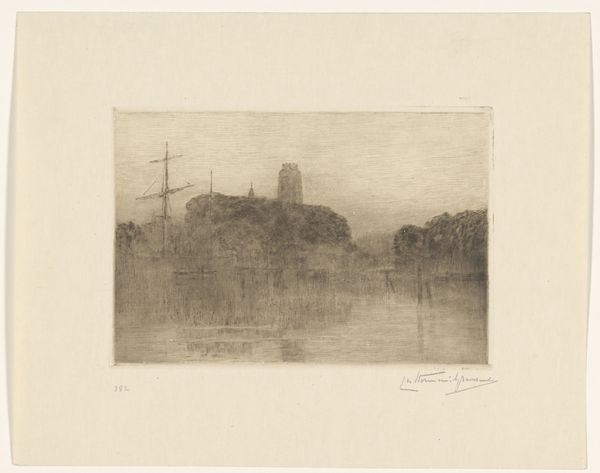
Gezicht op een kasteel op de hoge linkeroever aan een rivier 1838 - 1911
0:00
0:00
etching
#
etching
#
landscape
#
river
Dimensions: height 165 mm, width 222 mm
Copyright: Rijks Museum: Open Domain
Curator: This is Jean Pierre François Lamorinière's "View of a Castle on the High Left Bank of a River," created between 1838 and 1911. It's an etching currently housed here at the Rijksmuseum. Editor: It's very evocative, immediately suggesting stillness and perhaps a touch of melancholy with its muted tones and slightly obscured castle. The scale feels quite intimate too, doesn't it? Curator: The intimacy likely stems from the etching process itself. Think about the labour involved – the deliberate, repetitive action of scoring the plate to achieve these delicate lines and gradations of tone. Also, what sort of economic relationships and conditions were needed for artist and etching production to exist here? Editor: Agreed. And speaking of lines, notice how the artist employs hatching and cross-hatching to create a sense of depth and texture. The composition guides your eye from the reflective river, up the leafy bank, towards that almost spectral castle silhouetted against the sky. Curator: It does indeed! I’m wondering about the accessibility of this etching and others to middle-class patrons who were hungry for portable imagery to put in albums at the time. What effect might these relatively easy to copy images have had on more exclusive and luxury oil on canvas? Editor: An excellent point. And consider, too, the formal relationship between the darkness of the foliage and the relative brightness of the sky—it creates a strong contrast. This sharp contrast leads us to see what can and can’t be observed as light shapes in nature. The eye tends to find the point that is either the lightest or the darkest in the artwork in order to ground visual comprehension. Curator: We must not forget about the rise of printmaking during the industrial revolution in which landscapes could find larger audiences with less wealthy potential buyers and appreciators. Editor: Precisely. This intimate landscape is both beautiful and a compelling material artifact of its time. Curator: Yes, indeed! Thank you for adding that note.
Comments
No comments
Be the first to comment and join the conversation on the ultimate creative platform.
